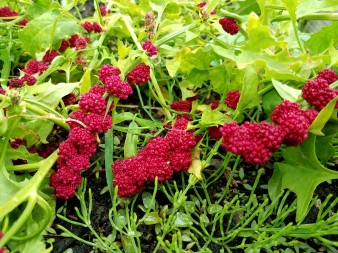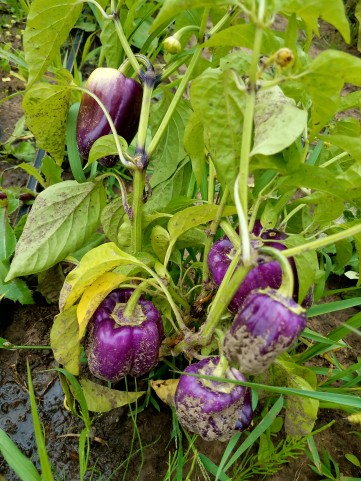
Pictured Rock, WI, this tree is growing on a rock with no nutrients or attachment to land. There was a stone bridge that the roots had grown over but then they fell and roots remained.
I found out as I have been interning at the Bounty Garden that plants are just like humans. We have a lot of the same needs. We need a balance of water, sunlight, nutrients and a healthy environment. When all of these elements are in homeostasis, we thrive. We are able to grow without limits. We are happy and strong and can find a way to resist anything that comes in our way. When one individual is successful, the whole community is successful.
However, when one of these systems is under attack, we have to fight to stay alive. Fending off threats can sometimes make us weak. If the conditions are not fertile for our existence, we may have to clench what we can and pull through the rough spot.
But just like us, plants are resilient. If a seed is abandoned underneath pavement in a vacant lot and determined to live, it will force a hole in the impossibly solid pavement and push through. If the farmer forgets to tend to a plant and it nearly dies, but after a little watering it may yet have the potential to bounce back. Sometimes all we need is for someone to stop and pay attention to our needs and our life can be turned around.
Aside from the Bounty Garden, I am teaching a Teen Garden class at Advocates foster care agency. I have planted and maintained a garden with the young adults who have been in the foster care system. These youth have been born into a life of unfertile soil with little choice in their own lives. They are struggling to succeed in this rocky environment. They just need someone to care for them and to be a steady figure they can trust. Quite frankly, some of them may not ever have someone who is going to help them grow out of the foster care system. They may be forced to struggle to survive on their own with little resources. They will have to force a hole through the concrete like the plants to succeed.
My supervisor explained to me how successful plants are when they are planted on rich, nutritious and balanced soil. The plants keep off the pests and are not as prone to disease. I imagine what our world could be like if we all made each other’s lives rich like this soil, how much more beautiful our lives could be. We all need to stop and look at our brother, sister or stranger in the eyes and listen to their story, smile at them, or randomly do something to help them just for the sheer joy of it. Imagine the potential our community has to thrive all together.
2018 Bounty Garden Intern- Clarissa Skaleski




 something is incomparable to an adult. Being able to help plant a seed, then watch it grow, and finally harvest a plant is a big achievement in their little world and being a part of helping these kids navigate their way through nature is one of the most fulfilling things I can think of.
something is incomparable to an adult. Being able to help plant a seed, then watch it grow, and finally harvest a plant is a big achievement in their little world and being a part of helping these kids navigate their way through nature is one of the most fulfilling things I can think of.






 Whether you are planning your garden for next season, already working in a garden, or even considering taking up gardening as a new hobby, you should set clear intentions of what you would like to accomplish. When most people think of yoga, the first thing that may come to mind is postures, or poses. While practicing these postures may help relieve the body of a hard-working gardener, one should be aware that yoga is much more than postures. Yoga is a way of life. There are eight limbs of yoga that act as guidelines for living a purposeful and meaningful life. Now you may be wondering how do the eight limbs of yoga relate to my garden? The answer is simple. Both the body and a garden are like sacred temples that should be treated with respect, care, and love! Here is how you can apply the philosophy of yoga to your garden to attain a bountiful harvest:
Whether you are planning your garden for next season, already working in a garden, or even considering taking up gardening as a new hobby, you should set clear intentions of what you would like to accomplish. When most people think of yoga, the first thing that may come to mind is postures, or poses. While practicing these postures may help relieve the body of a hard-working gardener, one should be aware that yoga is much more than postures. Yoga is a way of life. There are eight limbs of yoga that act as guidelines for living a purposeful and meaningful life. Now you may be wondering how do the eight limbs of yoga relate to my garden? The answer is simple. Both the body and a garden are like sacred temples that should be treated with respect, care, and love! Here is how you can apply the philosophy of yoga to your garden to attain a bountiful harvest:






